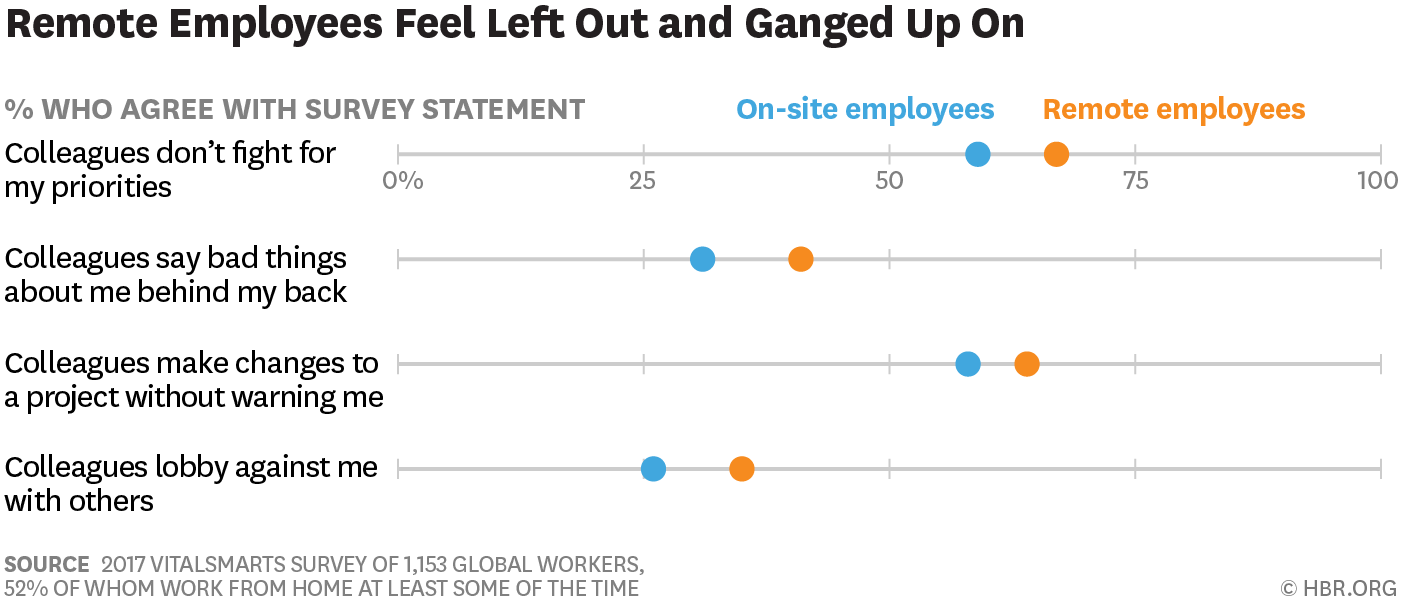From “digital nomads” to cross-continent distributed teams to Friday traffic-dodgers: Working remotely has never been so popular and collaborative. It’s a ubiquitous trend that’s been around as long as we’ve had work to do and homes to live in, yet there’s no doubt that remote work is on the rise.
Still, working remotely can yield mixed results for many companies, as keeping workers communicative and collaborative can be difficult without face time. The successful remote worker must be equal parts team player and self-motivated to foster strong work relationships, and focus on the advantages of working from home, rather than the challenges.
What does “remote” mean?

The question "What is remote work?" can be answered in many ways. However, remote work can be defined as any work that is conducted in a non-centralized location. Remote jobs can vary from working at home just once to working online all week to working out of a satellite office. There are even fully remote companies that operate on a distributed model, with team collaboration channeled entirely through the use of digital tools.
Limited only by a reliable WiFi connection, you can work remotely virtually anywhere, from the comfort of your own home to trendy collaboration spaces in Bali. Companies like WeWork have exploded onto the scene, offering coworking and remote collaboration spaces in most major metropolitan areas.
Challenges facing remote workers
As diverse as these options are, nearly all remote workers face the same challenges: feelings of isolation, a sense of distrust, and a lack of visibility into broader team objectives.

When remote workers encountered a common workplace challenge, 84% said their concerns dragged on for more than a few days. Additionally, remote workers tend to feel more strongly that colleagues speak poorly of them behind their back when compared to on-site employees. Both of these are common disadvantages of remote work.
Many reputable companies have been shying away from allowing their employees to work remotely: At Yahoo, Marissa Mayer infamously started the trend of revoking employee remote working privileges, which later spread to IBM and Reddit. They argue that the flexibility with working remotely comes at a cost: more direct collaboration and communication in and around the office.
But there are ways to maximize the collaboration of remote workers. Learning how to keep remote workers engaged and building confidence will pay dividends in the collaboration and productiveness of your team.
Working remotely is an exercise in self-efficacy
Self-efficacy, or the confidence you have in your personal ability to accomplish the task at hand, is, perhaps, the most crucial trait of any remote worker. This confidence is a make or break when working remotely. A study of almost 400 remote workers determined that the use of self-efficacy assessments “played a critical role in influencing their remote work effectiveness, perceived productivity, job satisfaction, and ability to cope.” Still, that confidence can be difficult to maintain as a remote worker, especially if workplace conflicts tend to linger.
How do you inspire this intrinsic value in remote workers? The solution lies in a mix of digital tools and strategies aimed at easing barriers to feedback, building trust, and establishing workflows that inspire self-confidence and collaboration across your team.
Remote Collaboration Tips
We’ve compiled a list of key tips to bolster collaboration with remote workers, improving their self-efficacy, while allowing them to become better collaborators and contributors in their teams.
Tip #1: Remote workers crave feedback
It’s a simple fact of working remotely: If you’re not in office, it’s harder to receive feedback on work quality, contribution level, and overall social standing. Feedback has been proven a highly effective intrinsic motivator and has been shown to inspire learning, build trust, and make for more satisfied workers. Remote workers don’t get nearly enough of it.
With 39% of workers in our Stress and Productivity report citing poor communication as the top workplace stressor, it’s no surprise that remote workers suffer these same challenges which can cause remote work burnout. It can be easy to hold onto self-doubt while working remotely: encouraging an ongoing feedback process can lead to happier working relationships, and in turn, better mental health.
Tip #2: Build trust and empathy
Trust is the bedrock of any remote working relationship. In fact, trust has been identified as the most impactful trait in all business relationships, according to Gallup. Yet, 55% of leading CEOs still believe that trust is a fundamental problem in their organization.
Establishing trust is as simple as allowing workers a reasonable amount of privacy and independence in daily tasks. While constant breaks in communication aren’t a good sign, if you allow remote workers the benefit of the doubt when brief communication delays occur, they’ll be more forgiving of the same for in-office workers. As a manager, you should have reasonable trust in your remote workers to complete their work in a timely and high-quality manner. As a remote worker, you should be understanding of the challenges of remote collaboration and be as responsive as possible.
If possible, schedule periodic in-person check-ins. If not, try to use video-calling services, like Zoom, when applicable. A quarter of respondents in an HBR survey said managers who insisted on some face time with remote employees were generally more successful.
Tip #3: Establish well-defined workflows
Many companies unwittingly neglect work process when creating remote programs. How can digital tools be useful if you aren’t using them correctly?
Try starting with a specific and concrete list of remote work expectations for your team. This helps alleviate any confusion and gives the remote worker a place to turn should they have any questions. Next, invest in digital tools that afford the level of flexibility your remote workers’ desire. You’ll need a mix of work visibility and reporting, some great collaborative capabilities, and automation for repetitive processes.
Synchronous collaboration tools, which encourage both parties to communicate at the same time, are valuable for in-the-moment conversations but can present challenges when work hours differ. When working remotely, asynchronous tools (like Wrike!) can provide the flexibility needed to collaborate effectively across time zones.
Stay productive across distances with a free trial from Wrike!
Benefits of Remote Working
Challenges aside, workplace flexibility is quickly becoming the most desired perk for workers nationwide, according to data from our Stress Epidemic report. Working remotely is a well-deserved reward for teams that are highly integrated and incredibly overworked. Additionally, working remotely offers a reprieve from the water-cooler distractions of the modern office, allowing you to maintain better focus while cutting down on your commute and maintaining your focus, thanks to today’s digital tools.
Some of the benefits of working remotely include:
- Working from the comfort of your own home
- Mitigating daily office distractions that make it harder to focus
- Eliminating stressful commutes and transit times
- Scheduling work around the stresses of your busy life
Resources for the remote worker
Remote work isn’t going away: In fact, a survey conducted by LinkedIn showed that 64% of employees would forgo a raise for greater work flexibility. We’ve included a few links for further reading on the topic of remote work. Let us know in the comments how you feel about working remotely.
- The Right Way to Empower Your Team With Flexible Hours and Remote Work, from Wrike
- Why Remote Work Thrives in Some Companies and Fails in Others, collaboration tips from Harvard Business Review
- Out of the Office: More People are Working Remotely, from the New York Times
Want to find out more about how Wrike can empower your organization’s remote teams (for example, with a work from home policy template)? Read more here.
Banner photo: Andrew Slate for Wrike




